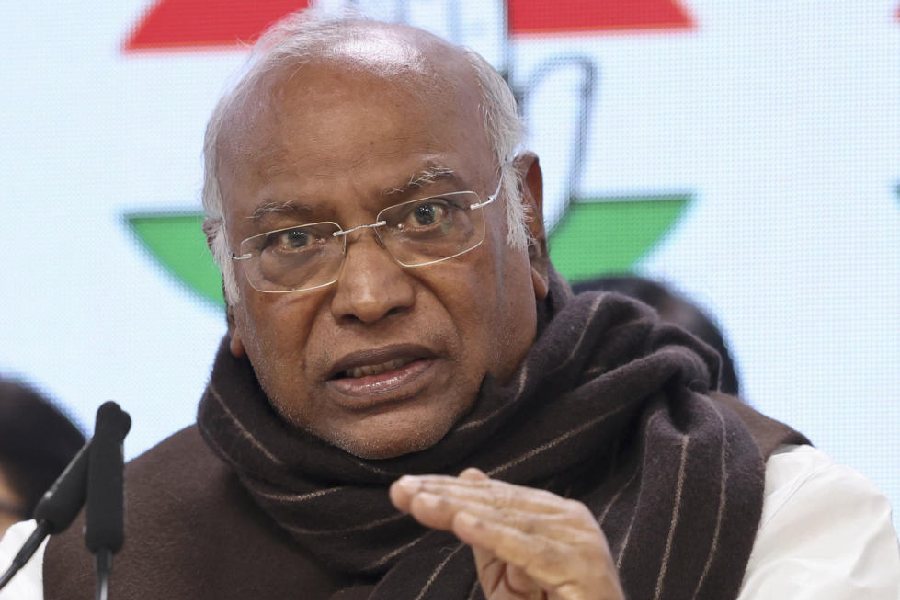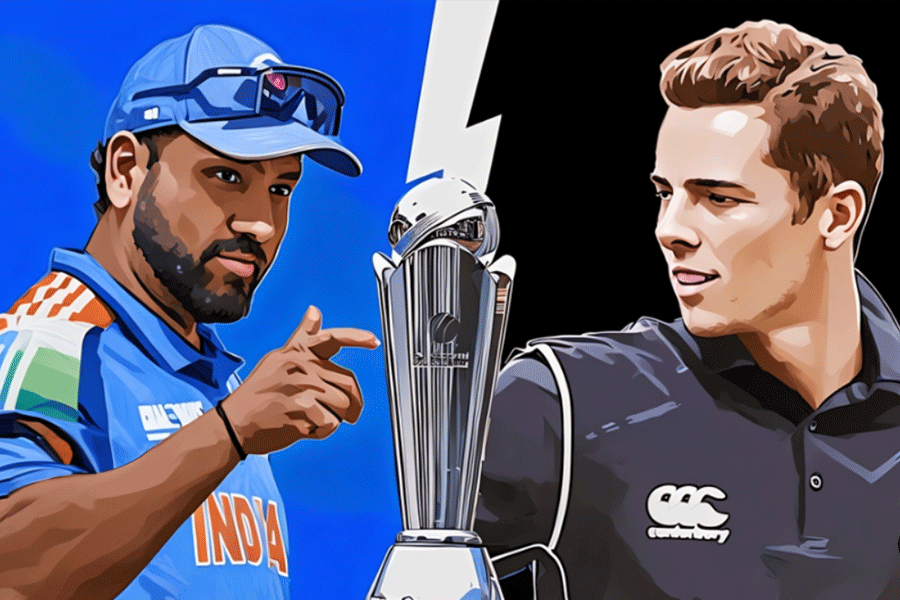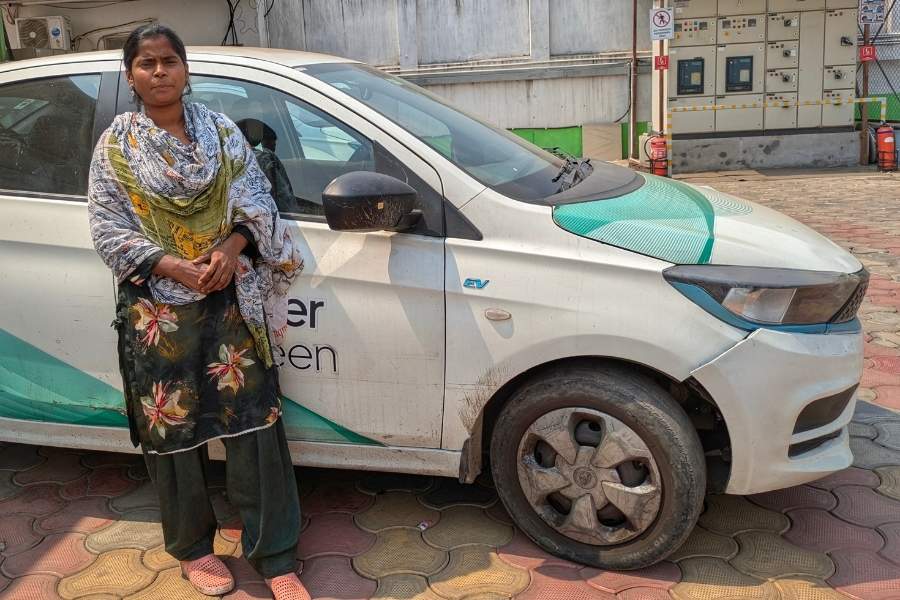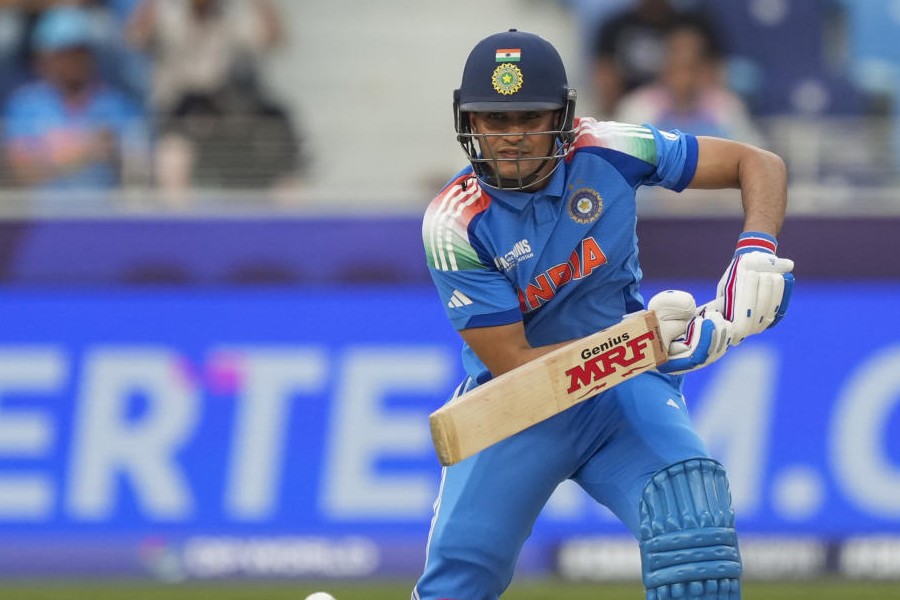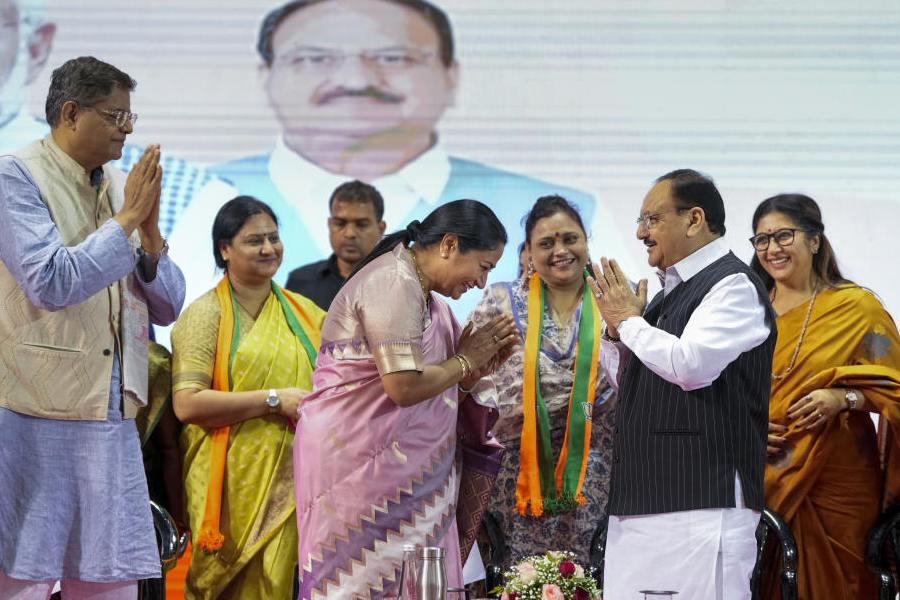The other day I walked out of office at peak hour, when radio taxi rates are impossibly high. The white taxis arrive late too. So I hopped on to a yellow taxi after a bit of haggling, agreeing to pay a fare that was almost radio taxi level, but I was spared the wait and a few rupees.
Radio taxis have given birth to a strange new economy. But the bumpy roads are the same, and the old body now hurts if you are in a battered vehicle. Plus the taxi driver, a robust young man, was quite convinced that his car was above potholes, literally. I tried to talk to him but he did not listen.
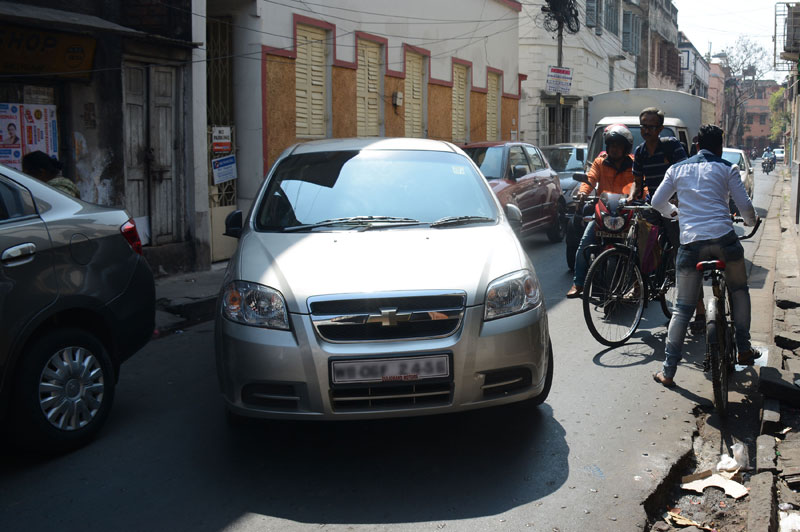
A file photograph of cars clogging a south Calcutta lane Debosmita Bhattacharya
He did not listen to me again when I reached my destination in south Calcutta. He parked the car, I felt, quite deliberately at the corner of a road so that the traffic from other directions could not flow easily. In the two minutes I took to get down and pay the fare, I think about a thousand cars had accumulated behind us and they were all honking together.
Sometimes I feel honking together is some kind of a sport for Indian males. Anyway, in those two minutes I felt that I had parked myself between the world and its business. I paid the driver as swiftly as I could and I was trying to flee, when another young man stopped me, emerging from the grey miasma of the Calcutta evening that seems to repress the rain.
“Now, if your driver was a Bengali, he wouldn’t have done that,” he plunged into it straightaway, in Bengali. As I looked at him stunned, he began to explain. “He stopped the car at the corner not because he wanted to but because he lacks the intelligence. That is because he is not a Bengali,” the man said.
“So all Bengalis are intelligent?” I asked. “Yes,” he replied. How did he know this? “Haven’t you heard about Netaji Subhas?” he continued. I said, yes. “Haven’t you heard about Khudiram?” he went on. I said, yes. He seemed to rest his case. The conversation was happening on the pavement, next to a busy phuchkawala. I wanted to give it back to him. I said, “But the two Bengalis you mention have been long dead. How about now? How about all those honking men, who can’t wait for a minute?” To this, he stuck out his tongue, touched his ears and shook his head from side to side and disappeared into the unevenly lit blue-and-white LED evening.
His gesture, of course, meant shame, and I think it was meant at me. How could I, being a Bengali, not agree with him? I should feel immense shame. I was betraying my own. I was not worthy of being a member of the community.
All true, perhaps. And the conversation continued in my mind. I realised one important thing. Bengali greatness is a thing of the past, or of passing. Like the passing man. Like the great Bengali icons who are painted on walls or entrances to parks. The pantheon usually starts with Raja Rammohun Roy, works its way through Bankimchandra Chattopadhyay, Vidyasagar and Ramakrishna Paramhansa, Tagore, Vivekananda, Khudiram, Netaji Subhas. Often Sri Aurobindo is included.
These great personas have one thing in common: they were all born in the 19th century, except Rammohun, who was born in the 18th century. They are also Hindus and male. Some women intrude at times: Mother Teresa, Sister Nivedita and Matangini Hajra most notably, and also Rani Rashmoni and Ma Sarada. Among these two were not jaat Hindus and two were foreigners. But this is just a passing thought.
Only two Bengalis qualify as great from the post-colonial era: Satyajit Ray and Amartya Sen. After them, things stopped moving. They became stationary. The great things in Calcutta now do not move at all. In fact, they are large concrete structures. I am referring to the shopping malls, of course. So much so that structures once considered great are also being mistaken for malls now. Once I was asked by a couple if the museum was the new mall that they were looking for.
A statue of Vivekananda has been installed where the street bends near my house. His is a vantage point; he has a good view of two streets as he stands below a multi-storey, from which a particular person comes out every other day and dumps garbage on the street. He stares at the stump of a tree that was recently felled, without permission. And every day, thrice a day, the streets are chock-a-block with cars as different sections of a neighbourhood school get over. You should hear the collective honking then.
As I pass this great man every day, I wonder what he makes of us.


